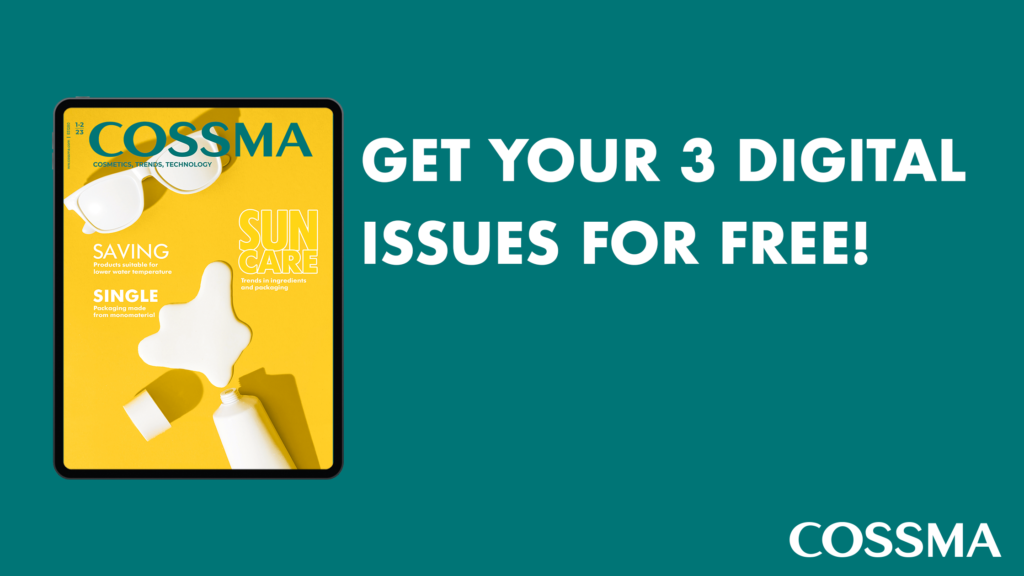
Sponsored by: COSSMA
For a product to be successful on the market, it must not only stand out for its effectiveness and safety, it must also explain what it can do. But the choice of product claims must not be made arbitrarily. In her article in Cossma magazine, Anna-Maria Kauschke, state-approved food chemist at Lemikos in Wiehl, Germany explains which laws and regulations must be observed in Europe.
Currently popular claims
A frequently used claim that is seen again and again and that is also popular with customers and well received is advertising with so-called ‘Clean Beauty’. But what does ‘clean’ actually mean? ‘Clean Beauty’ is often explained as follows: ‘Clean Beauty’ stands for products that are mostly free of animal testing and do not contain certain controversial ingredients.
The problem here is that the term ‘clean’ always gives consumers the impression that the ingredients deliberately dispensed with here are not clean, but ‘dirty’. The consumer can quickly misinterpret this and regard substances that have been tested as safe for use in cosmetic products and are permitted as questionable. Harmless substances are thus more often avoided by consumers and used less frequently.
Better to avoid
Claims such as ‘We love animals’ or ‘Free from animal testing’ or a picture of a bunny rabbit are also very popular, yet animal testing has been banned in the EU since 2013 under Article 18 of Regulation (EC) 1223/2009. It is also prohibited to market cosmetics that have been tested on animals outside the EU. Such an advertising claim is therefore only allowed if the specific product has never been tested on animals, not even in preliminary stages anywhere in the world, or by anyone for any purpose. Providing this proof is difficult, which is why the use of the claim ‘animalfree’ is generally discouraged.
Statements such as ‘We love animals’ or ‘Cruelty free’ do not violate Article 18, but here too it must always be proven what the statements refer to. The consumer must also be able to recognise this transparently.
Another claim that has enjoyed great popularity in recent years, also among consumers, is the ‘free from’ claim. Similar to ‘Clean Beauty’, it is also important here to avoid ‘controversially discussed’ ingredients. Be it parabens, perfume, or preservatives. Even though ‘free from’ claims are merely statements that refer to the content of the cosmetic product, the consumer is still given the impression that doing without these substances is ‘better’.
Tips and tricks
Refrain from denigrating certain substances and substance groups and making them look bad. As long as a substance is approved according to the EU Cosmetics Regulation, it can be used safely and must not be portrayed as harmful. Only a statement that the substance is not used in their product can be made. Put on your ‘consumer glasses’ and consider how certain claims may be received and evaluated by the consumer. Might you even be misleading? Then you should formulate the claim differently.
Claims like 0% or 100% should be avoided. They are easy to attack and difficult to prove. Analytical tests would have to prove the claim here. Words such as ‘mostly’ or ‘big part of’ are less risky. It makes more sense to claim what the product contains rather than what it does not contain. Such claims can also trigger a purchase decision in the consumer.

